#Tupolev Tu-144
Explore tagged Tumblr posts
Text

When NASA owned a Tu-144 Concordski
7 notes
·
View notes
Text

Tupolev Tu-144 demo at the 1973 Paris Airshow
#Tupolev#Tu-144#Charger#Russian aircraft#supersonic airliner#airliner#airshow photos#Paris Airshow#jet#passenger plane
85 notes
·
View notes
Text

5 notes
·
View notes
Text
Cover of the day: Day 8: Mint airmail envelope from the Soviet Union
I have another Soviet Stationery envelope to show you (Sorry, but it is one of my main interests), I'll try to post some variaty later, but not today! MUAHAHAHAH JK
---
Today I have something special for the 2^3rd anniversary! TWO COVERS, yes you heard me 2 whole covers!
The first one was sent... never, well because this is a mint cover (Mint means unused, but you probably already knew that) This is the first mint cover in the COTD series, so I can't talk about postmarks or when it was sent... because it was never sent!
This envelope has an indicium of a 1966 16 kopeck stamp, and it was made in 1977, to be specific the 11th of april, 'how do I know that' you may ask, (Almost) every paper item made in the USSR has the date of issue/manufacture printed and price on the back (This includes Envelopes, Postcards, Records, some books, ETC)
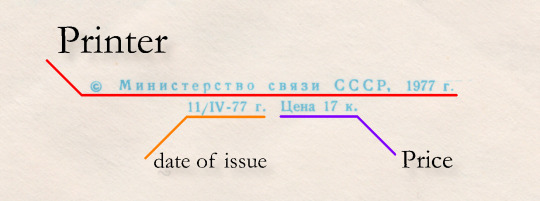
The thing on this envelope

The thing on the cover from day 5 (Sorry it's a bit hard to write with a mouse)
So thanks to Soviet standards, I and now you(!) can tell this envelope was issued on the 11th of April 1977.
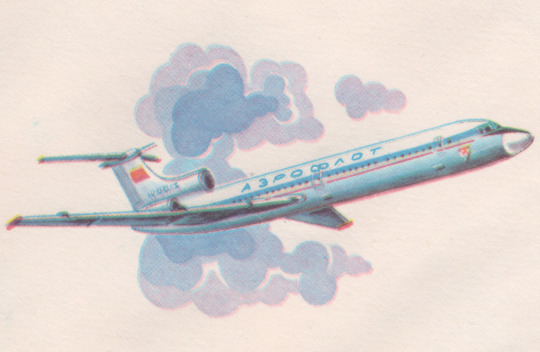
Lets now talk about the cachet on this cover. The cachet features the Tupolev-154, a jet airliner produced by Tupolev in The Soviet Union and then The Russian Federation. It shouldn't be confused with the Tupolev-144, the (mostly) forgotten first supersonic jet airliner. It's first flight was about 2 months before the Concorde, and entered service less than 1 month before the Concorde, in December 1975. And the first passenger service (Between Moscow and Alma-Ata) in November 1977, but due to it being horribly designed, it wasn't very popular; reportedly you had to yell to the person for them to hear you, because the engines were so loud, even if they were sitting right next to you, and if they were sitting 2 seats away from you, you couldn't hear them even if they were screaming and the only way to communicate was by passing handwritten notes (Source), and it wasn't very nice to ride on them. That led to passenger services being cancelled only 7 months later on 1st of June 1978. But they remained in production until 1983, and were used by The Soviet Millitary , Soviet Space Program(Late 80s), and NASA (Until 1999!).
Oops I went on a bit of a tangent there. The TU-154 was produced from 1968 up until 2013(!), over a thousand were produced and are still in use by for passenger services in North Korea (They are predictably the only passenger user left), For millitary service in Russia, China and Kazakhstan, and Goverment service in Kyrgystan.
Of course being one of the most produced jet airliners ever, quite a lot of accidents and incidents have happened with TU-154's (110 accidents) for a total of 2911 fatalities. Moje Sožalje/My condolences.
Welp, Here's the full mint unhinged cover, in all it's glory

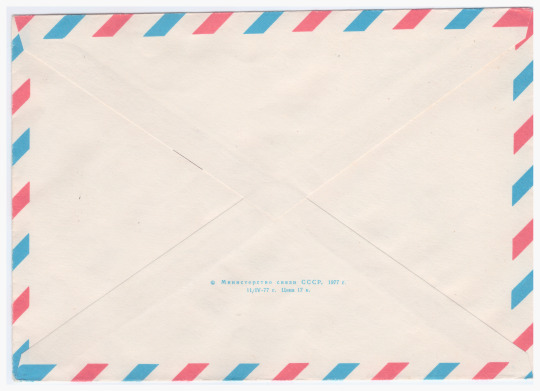
Wow, look at it, isn't is preetee??????
Oh yeah, we have another cover to talk about. You may have asked yourselves 'How did you chose which two covers to add?'. Well its pretty self explanatory, it's a postally used version of the same envelope sent on the 23rd of March 1981 from Vilnius, Soviet Lithuania to Marbella, Spain. It was also uprated to 32 Kopecks with a 1961 16 kopeck stamp.
I dont have anything else to say so... HERES THE COVER
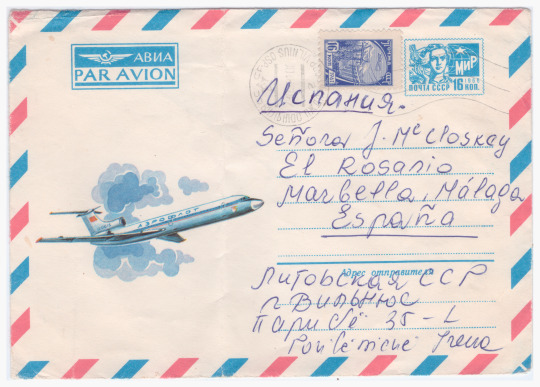

P.S. Wow this was a lot longer than I expected. Don't expect other posts to be this long, sorry.
#covers#philately#postal stationary#soviet union#hotduck.gif#tupolev#tu 144#tu 154#2 to the power of 3#is this how tags work#oh hell yeah#bye now
0 notes
Note
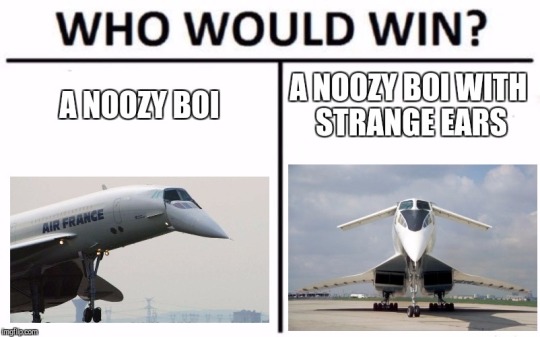
Noosy boi for the win!
Concorde
Tupolev Tu-144
76 notes
·
View notes
Text
GORGEOUS GORGEOUS PLANES!! AND A TUPOLEV???!!
AND THE SOVIET CONCORDE AT THAT!! (the Tupolev Tu-144 was their version of the Concorde!)
whoop whoop new RB game
rb with your F/O (Maximum of two please <3) and i'll assign them a plane!
It will sheerly be based off of the vibe the f/o and the plane gives me, I might include a fun fact or two about the plane.
here are a few examples <3

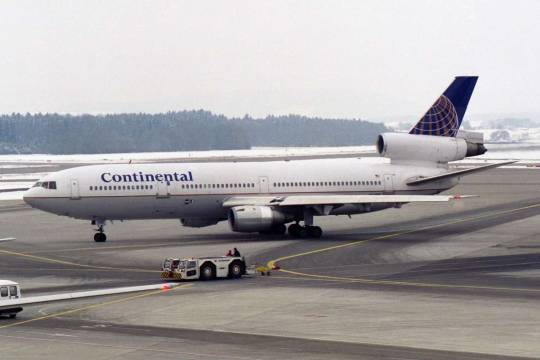
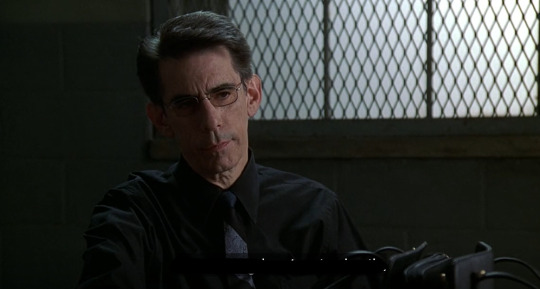
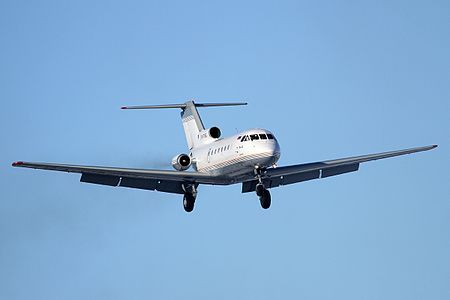
note: I'm probably going to be a bit slow at this, since I like to research the f/os and the planes, so please be patient!
proshi.p DNI, no planes for you
#rb games#rb games: wesker#rb games: krauser#THANK YOU SO MUCH#ALSO FUCK YES A TUPOLEV!!!#(I am into Soviet Planes)#I am now immediately researches these bad boys#THANK YOU ONCE AGAIN!!!#AFTER SEARCHING THE TU 144 IS THE SOVIET CONCORDE???#AAAAAAAAAAAAAAAAAAAAAAASS#MAN I FUCKING LOVE THE CONCORDE AND I GET THE SOVIET CONCORDE ASSIGNED TO ONE FO MY F/OS?? FUCK YES!!!#breaking news: self shipper goes crazy about assigned Soviet plane#I FUCKING KNEW THAT THE TU-144 SOUNDED FAMILIAR
21 notes
·
View notes
Text
Miss Conenginality No. 5 - Tupolev Tu-134
So most planes I've talked about so far on this blog have been modern Boeing, Airbus, Embraer, Bombardier, and ATR models. These are now ubiquitous basically everywhere. Occasionally I'll bring up an old Douglas or even a Lockheed airliner. But back during the cold war Soviet airplanes were a thing, and by modern standards they're really different from what we're used to.
As someone of Soviet extraction I have a weird amount of pseudo-nostalgic fondness for these planes, many of which were out of service before I was born. So let's take a look at one I've looked at a lot in preparation for an upcoming post - the Tupolev Tu-134.

I would not say the Tu-134 is my number one favorite of the assorted weird-looking Soviet planes out there, but I would definitely say that I enjoy it a lot and I think beyond that it's a good starting point for weird-looking Soviet planes. It was common, with the better part of a thousand produced, and you could consider it the rough counterpart to something like a BAC One-Eleven or an earlier DC-9 - a nice and reliable plane to carry a relatively small number of passengers a short-to-medium distance, with a t-tail, two rear-mounted engines, and swept wings. It's just...a lot spikier.
The Tu-134 was introduced in 1970. It was built because Nikita Khrushchev took one flight in a Sud Aviation Caravelle and was so impressed by the quiet cabins of rear-engined planes that he demanded one be designed immediately. (This becomes funny when one realizes that by modern standards the Tu-134, as is true of most planes of its era, is so loud it's banned from many airfields.) Like the other handful of planes that Soviet leaders decided needed to be designed because they saw a Western plane and went "hey, I want something like that", the Tu-134 was designed by Tupolev, who had also designed the Soviet Union's first jet airliner (the Tu-104) and the Tu-144 supersonic airliner. I find that even by the standards of Soviet planes Tupolev models, while they might not be the weirdest-looking, might be the weirdest-functioning in their own little ways.

A lot of Soviet planes have at least a handful of design features that are pretty off-kilter. To begin with, a lot of these planes are designed to work on unpaved airstrips, presumably because Siberia. This is extra true of a model like the Tu-134, which has engines located higher off the ground, reducing the necessary clearance from rough terrain and the chance of foreign object damage while on the ground.
The Tu-134 is a different sort of beast, though. It's the equivalent of a Soviet DC-9 or BAC 1-11, with the rear engines and t-tail, but it looks like it's trying to hunch in on itself due to its wing sweep being a spectacular 35 degrees. That's around ten degrees more swept than comparable designs. Why? Tupolev.
(Presumably the increased efficiency in high subsonic flight regimes was considered worth the risk of uncommanded pitch-ups, which feels in keeping with Soviet design principles of the time, which favored designs which were high-performance but very unforgiving. Maybe the tail and engines were heavier than on comparable models and thus required the higher sweep. Just my guess, though, and I know very little.)
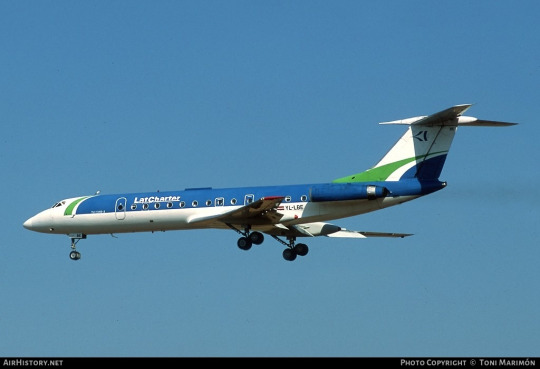
I just love the spikiness of this plane. The sweep on the wings means that no matter what angle you see it at it looks a bit silly, and the forward spike on the tailplane is just awesome. This entire plane looks like an arrow, or like a paper airplane model that nobody bothered to make less pointy when they scaled it up. Even the tapering of the fuselage up near the tail feels needlessly aggressive. It feels like an airliner dressed up as a fighter jet, or potentially a missile.

This is a plane which looks like if it struck another, much larger plane in midair it would simply go through it like a needle. This plane looks like you should be able to shoot it out of a very large bow. The wings are slightly anhedral (another reason for the excessive sweep may be to balance this out, as anhedral wings, or wings which slope downwards, sacrifice inherent roll stability for controllability, but this stabilizing effect is also conferred by swept wings. Yes, that is an oversimplification, but this post is about the visuals of the plane.) This always kind of makes the Tu-134 look like it's midway through flapping its wings, or like it's starting the process of folding up its wings via a hinge in the fuselage. It's almost a bit uncanny to be able to see the underside of the wing from angles that you normally definitely wouldn't. Anhedral wings are also a common feature of Soviet aircraft, but most of those are high-wing. It's sort of rare to see a low-wing anhedral aircraft in general aside from fighter jets. Those use computers to reduce the inherent instability of the configuration, but the Tu-134 was analogue. Very, very analogue. It actually ran on direct current. Why? Tupolev.
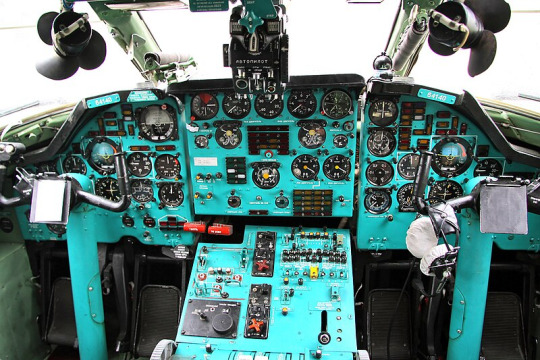
image: Vitaly Kuzmin
One thing I really like about Tupolev planes is that their cockpits were painted a delightful teal. This is not a unique Tupolev feature by any means (actually, the DC-9 had it) but they're the most consistent about it of any manufacturer I'm aware of. This apparently was meant to calm down pilots, presumably coming in useful during the uncommanded pitch-ups. (Extra nasty on a plane hypothetically able to deep-stall, though I can't find any record of a Tu-134 ever deep-stalling and its safety record was actually pretty good for its era.)
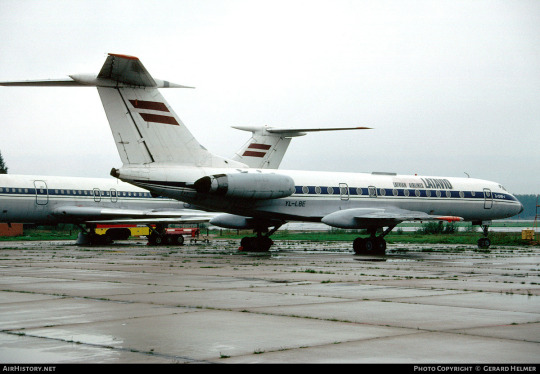
I have no idea what's up with that spike on the tail. The 707's tail spike was an antenna for high-frequency radio, so this might be something similar, but I'm not sure. (Check out the sweep on those horizontal stabilizers, though!)
Edit: the tail spikey is an anti-shock body, it seems!

There are two main models of Tu-134. How do you tell a Tu-134A from a Tu-134B? If you're a pilot, you'll probably be clued in by the lack of an APU (...the ICAO apparently thought this was fine, which worries me) but that's a bit hard to notice for a passenger. Thankfully, it should be easy to tell on landing, because the Tu-134A didn't have engines capable of producing reverse thrust. This is very uncommon (for good reason) but not unheard of. Does it solve the issue like the BAe 146, with an air brake and giant spoilers? Absolutely not, this is Tupolev.
DROGUE PARACHUTE.

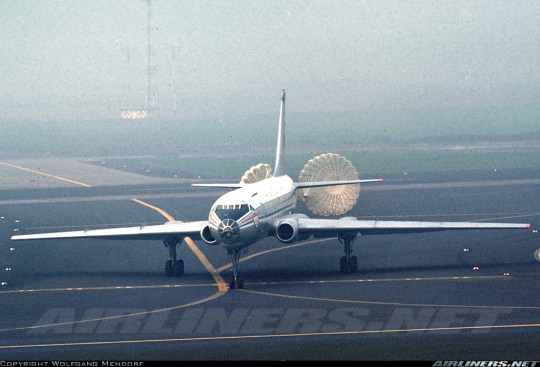
These are both the earlier Tu-104. I couldn't find any pictures of the Tu-134 using its parachute. Shame they didn't seem to bother adding liveries to them. Also, they're reusable, don't worry. And by 'they' I mean the parachutes, though the planes usually also are.
This does, surprisingly, have some actual advantages, in both high-speed emergency landings and in situations where the wheels can't find adequate purchase, like excessively gravelly or rainy runways. The earlier-mentioned BAe 146 was intended for operation on similarly rugged or short runways and, while it was generally safe, the margin for error was significantly reduced, with multiple fatal crashes related to overrunning runways in poor weather. Still, if I were the pilot of a plane which used one of these I would be perpetually terrified about the possibility of someone else running over my parachute. That would be potentially dangerous, not to mention incredibly awkward.
(That sounds like something you'd say to condescendingly ask a Tu-134 pilot why they're in a bad mood. Aww, someone run over your chute today?)
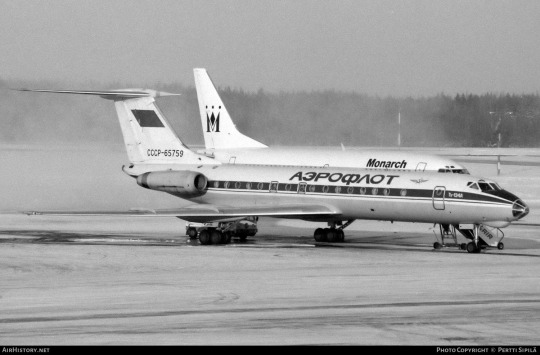
It's almost a bit bizarre seeing a Tu-134 next to a regular Western plane.
The main way to tell them apart at a glance, though, is the nose.

That little chin they've given her is where the radar is stored. Other airlines tend to keep this in the nose, but the Tu-134A used the nose for a much more important purpose. That's right, it's the
SOVIET NAVIGATOR PIT.

Soviet designs tended to use more flight crew for longer than Western ones, with planes retaining a dedicated radio operator and navigator in many cases. While this is a mostly innocuous design feature (you get severely diminishing returns for every flight crew member past the second, and risk breakdowns of communication by adding potential points of failure, but you do still have more brains on board to distribute tasks to) it has the pretty awesome result of the
SOVIET NAVIGATOR PIT.
This is to an extent a vestigial feature from the Tu-134's origin as the Tu-16 bomber (by way of the earlier Tu-124 and Tu-104 jet airliners, the latter of which was the second ever to fly). Still, this feature in Soviet planes isn't limited to Tu-16 derivations or even bombers, and can be found in planes like the Il-76.
Just think about flying on one of these. I get that it would be a nightmare for a lot of people, and I'll admit I don't love looking down at clouds from conventional cruise altitude myself, but I would love nothing more than to sit by one of these for a nice overland flight at a scenically suitable altitude (even though the glass seems like it might get cold).
Unfortunately, my hopes are not only dead but stillborn, as the Tu-134A is fully out of service. My hopes of flying on a Tu-134B are nearly as dire, but it's technically - very technically - possible. There remains one single operator of the Tu-134.

Air Koryo, the flag carrier of North Korea, still has two Tu-134 in its fleet. This poses a major problem, because currently my only passport is a US one, and US passports can't be used to enter North Korea. This ban is on the US's end rather than North Korea's, so if I could get a second passport from literally anywhere other than South Korea this would cease to be an obstacle, but even though I'm hypothetically eligible for a Russian passport there has never been a time I've wanted to get one less. You know, just in case I want to go to Poland or Latvia sometime. That is all to say...it's a race between Air Koryo retiring their Tu-134s, and me successfully getting another passport (and being able to afford a trip to North Korea on top of it). So unless any Irish citizens are eager to spend at least one year in a greencard marriage that dream is also quite dead. Sorry, sweet girl. It just wasn't meant to be.

Get a good look at those little raised bits on the wing, by the way. That's the old Soviet trick for keeping highly swept wings from doing that awful 'just kind of pitching up and losing control when close to stalling' thing, wing fences!
I just can't help but love this strange little pointy critter. Nobody ever designs planes that look quite this weird anymore, and I get that that's because the shape of an airliner has been more or less engineered to perfection by now, but it's still sort of a shame. This really was purely a Soviet thing - modern Russian designs like the Sukhoi Superjet and the Irkut MC-21 sort of just look broadly like 737s. The era of weird airliners seems to be largely over.
But at least when I review liveries, sometimes I'm able to gaze back through the rolled-up newspaper tube of history and see what planes looked like in a more imperfect time, when thrust reversers were an optional design choice and sometimes a plane was just very very pointy, because Tupolev.
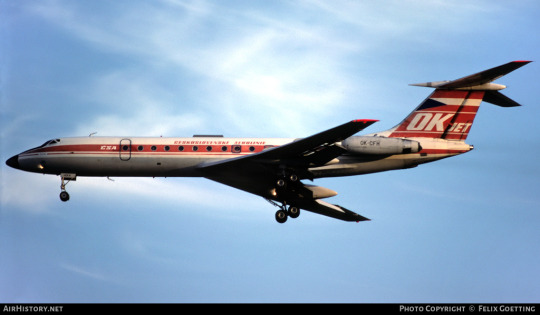

96 notes
·
View notes
Text
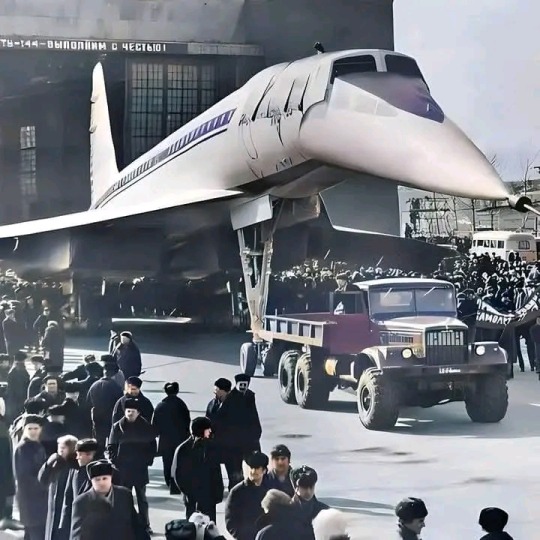
Tupolev Tu-144 Supersonic airliner
in operation from 1968 to 1999.
8 notes
·
View notes
Text

Tupolev Tu-144 'Charger' at Technik Museum Sinsheim, Germany
26 notes
·
View notes
Text
Events 12.31 (after 1950)
1951 – Cold War: The Marshall Plan expires after distributing more than US$13.3 billion in foreign aid to rebuild Western Europe. 1955 – General Motors becomes the first U.S. corporation to make over US$1 billion in a year. 1956 – The Romanian Television network begins its first broadcast in Bucharest. 1961 – RTÉ, Ireland's state broadcaster, launches its first national television service. 1963 – The Central African Federation officially collapses, subsequently becoming Zambia, Malawi and Rhodesia. 1965 – Jean-Bédel Bokassa, leader of the Central African Republic army, and his military officers begin a coup d'état against the government of President David Dacko. 1968 – The first flight of the Tupolev Tu-144, the first civilian supersonic transport in the world. 1968 – MacRobertson Miller Airlines Flight 1750 crashes near Port Hedland, Western Australia, killing all 26 people on board. 1981 – A coup d'état in Ghana removes President Hilla Limann's PNP government and replaces it with the Provisional National Defence Council led by Flight lieutenant Jerry Rawlings. 1983 – The AT&T Bell System is broken up by the United States Government. 1983 – Benjamin Ward is appointed New York City Police Department's first ever African American police commissioner. 1983 – In Nigeria, a coup d'état led by Major General Muhammadu Buhari ends the Second Nigerian Republic. 1991 – All official Soviet Union institutions have ceased operations by this date, five days after the Soviet Union is officially dissolved. 1992 – Czechoslovakia is peacefully dissolved in what is dubbed by media as the Velvet Divorce, resulting in the creation of the Czech Republic and the Slovak Republic. 1994 – This date is skipped altogether in Kiribati as the Phoenix Islands and Line Islands change time zones from UTC−11:00 to UTC+13:00 and UTC−10:00 to UTC+14:00, respectively. 1994 – The First Chechen War: The Russian Ground Forces begin a New Year's storming of Grozny. 1995 – The final comic of Calvin and Hobbes is published. 1998 – The European Exchange Rate Mechanism freezes the values of the legacy currencies in the Eurozone, and establishes the value of the euro currency. 1999 – The first President of Russia, Boris Yeltsin, resigns from office, leaving Prime Minister Vladimir Putin as the acting President and successor. 1999 – The U.S. government hands control of the Panama Canal (as well all the adjacent land to the canal known as the Panama Canal Zone) to Panama. This act complied with the signing of the 1977 Torrijos–Carter Treaties. 1999 – Indian Airlines Flight 814 hijacking ends after seven days with the release of 190 survivors at Kandahar Airport, Afghanistan. 2004 – The official opening of Taipei 101, the tallest skyscraper at that time in the world, standing at a height of 509 metres (1,670 ft). 2009 – Both a blue moon and a lunar eclipse occur. 2010 – Tornadoes touch down in midwestern and southern United States, including Washington County, Arkansas; Greater St. Louis, Sunset Hills, Missouri, Illinois, and Oklahoma, with a few tornadoes in the early hours. A total of 36 tornadoes touched down, resulting in the deaths of nine people and $113 million in damages. 2011 – NASA succeeds in putting the first of two Gravity Recovery and Interior Laboratory satellites in orbit around the Moon. 2014 – A New Year's Eve celebration stampede in Shanghai kills at least 36 people and injures 49 others. 2015 – A fire breaks out at the Downtown Address Hotel in Downtown Dubai, United Arab Emirates, located near the Burj Khalifa, two hours before the fireworks display is due to commence. Sixteen injuries were reported; one had a heart attack, another suffered a major injury, and fourteen others with minor injuries. 2018 – Thirty-nine people are killed after a ten-story building collapses in the industrial city of Magnitogorsk, Russia. 2019 – The World Health Organization is informed of cases of pneumonia with an unknown cause, detected in Wuhan. This later turned out to be COVID-19, the cause of the COVID-19 pandemic.
2 notes
·
View notes
Note
borzoicord
berhaps it's just me but im going to call the concorde a greyhound instead because the real borzoi plane (as i've posted before) is the tupolev tu-144
7 notes
·
View notes
Note
hello pleasures of the harbour !! recently i went to a plane museum and i saw the droop nose planes youve posted about so i thought you might like my photos :] maybe
here is the Concorde and the Tupolew!: i have many more photos but i can only put so many here
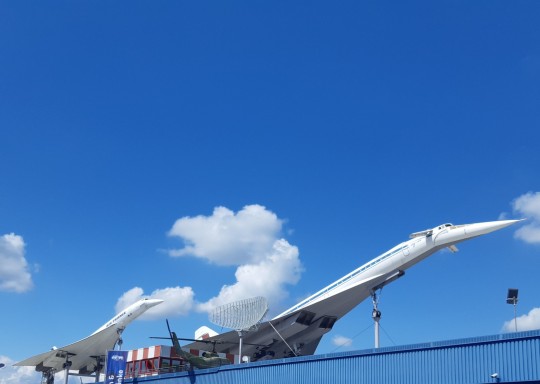
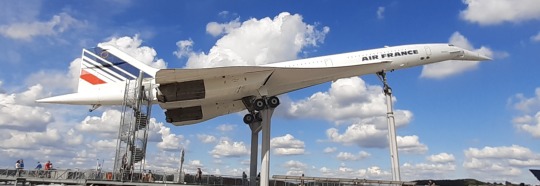
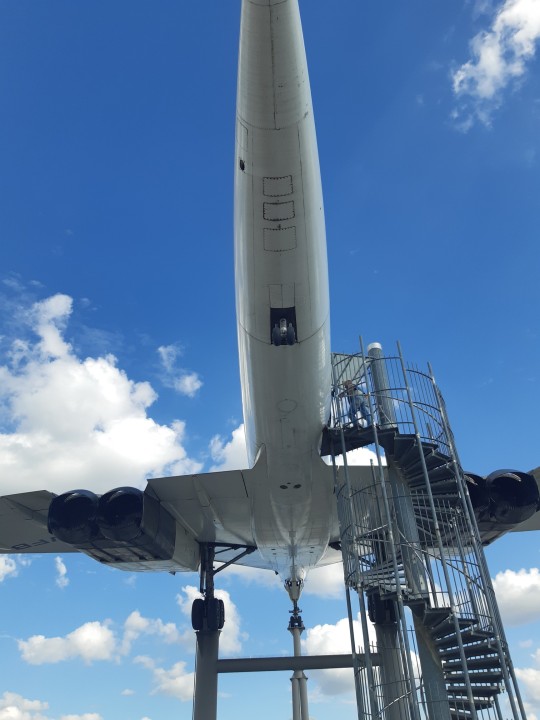
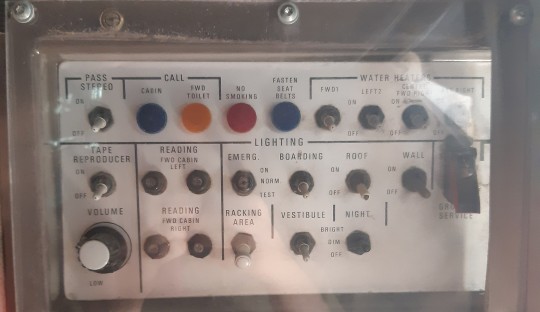
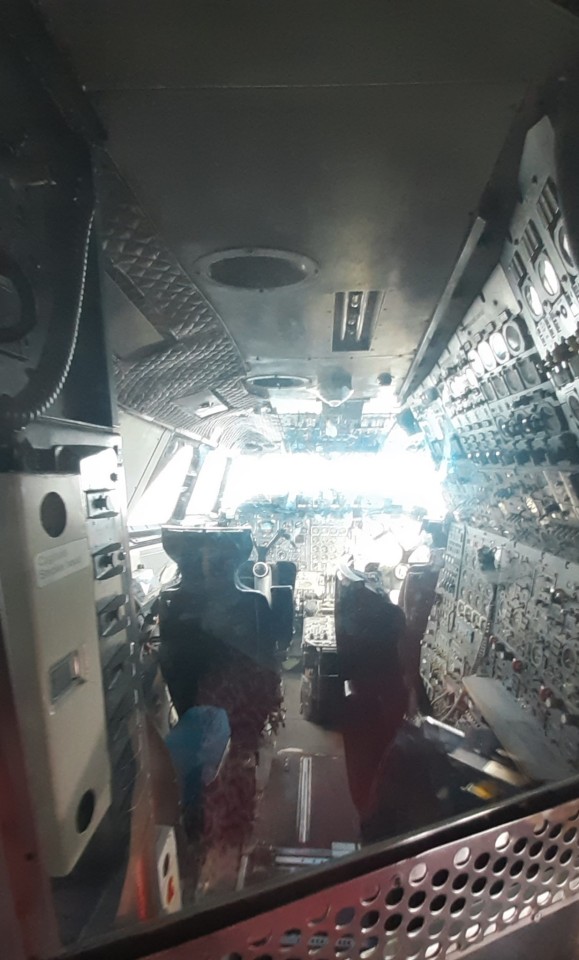

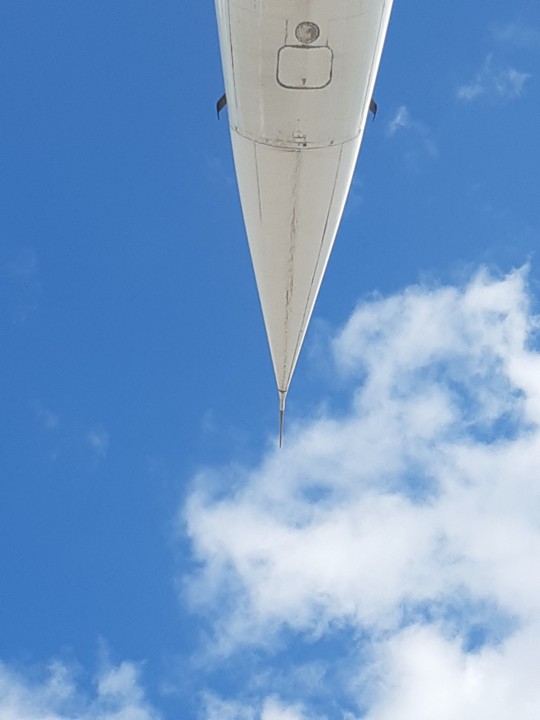
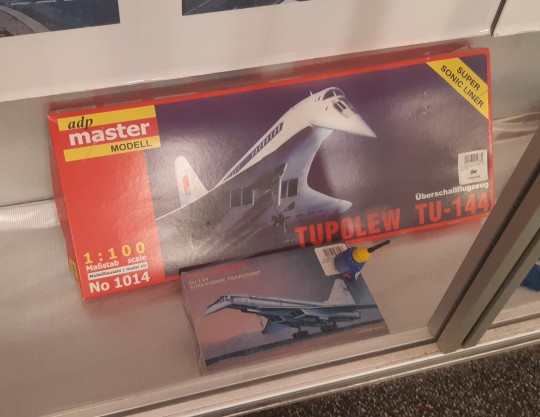


i hope you like them ! :]
HII YES OMG. i love these things so much TY FOR SHARING THESE PHOTOS!!! ohhh my goodness i would kill to be there; i hope you had a great time!! it’s so amazing how huge the concorde is in person, it’s really something that can’t be fully understood just through photos (though the same goes for most planes i suppose lol) also the tupolev tu-144 is like a big puppy to me. with her ears and all.. ❤️ world’s largest dog for real.
#asks#araksi413#these are seriously so cool ty for sharing. it’s so crazy how narrow the concorde was/is inside#one day i hope i can see one of the ones they have on display as well!!
8 notes
·
View notes
Note
The droop nose or drooped nose is a feature fitted to a small number of aircraft types so the nose of the aircraft can be lowered during takeoff and landing to improve the pilot's view of the ground below. This feature is used with a very-low aspect ratio wing such as a delta wing. It is installed in aircraft capable of supersonic speeds but is lowered only during low-speed operation such as takeoff and landing.
The Fairey Delta 2 high-speed experimental aircraft, which had a droop nose that included its cockpit
Droop noses have typically been installed on supersonic airliners such as Concorde and the Tupolev Tu-144; and high-speed experimental aircraft, such as the record-breaking Fairey Delta 2 and the Sukhoi T-4 strategic bomber.
Nature truly is beautiful
5 notes
·
View notes
Text
Supersonic Boom
Απόψε, στην Έρημο Μοχάβε, η πρώτη πτήση τού Boom, μετά την απόσυρση του Concorde και τού Tupolev Tu-144, κατέδειξε ότι είναι εφικτή η υπερηχητική πτήση, εκεί στα 35000 πόδια, με σύζευξη Starlink και υποσχόμενη μεταφορά στο tarmac των Αεροδρομίων τού κόσμου μέχρι το τέλος τής τρέχουσας δεκαετίας. Αθήνα, 28 01 2025
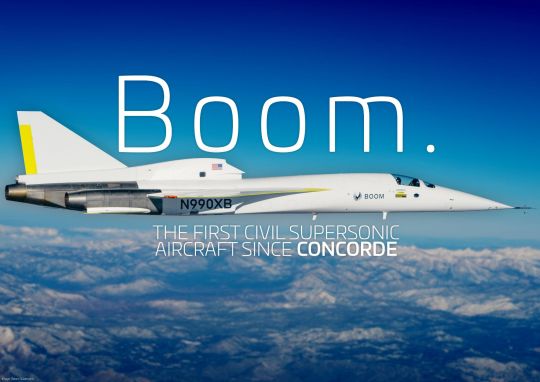
View On WordPress
0 notes
Text
Airplanes in OpenTTD

Did you know that OpenTTD has airplanes in it, too? Even some famous ones, like the Concorde Tupolev Tu-144 Yate Haugan.

As you can see, some AIs like to use a lot of aircraft, and make quite a lot of money on them; especially compared to the poor human player (me, bottom left) who likes trains. In fact, this is backed up by graphs, as seen here:


While Green's finances have taken a recent turn for the worse, and now their human competition has overtaken them, it is clear that airplanes (and apparently buses that run halfway across the map) are a very profitable business model. However, one should beware of only using planes, as there are consequences:

The companies that only use planes have a far worse performance rating than those that use trains as well, with a human and even one of the other computer players being more well liked than either of them.
This is of course reflective of real life, where airlines make loads of money and everyone hates flying (because what else are you going to do, spend a week on a boat?), whereas passenger railroads don't make much money but are loved by everyone. Except in Canada.
#bad openttd ideas#OpenTTD#Via Rail#seriously canadian trains are even worse than american ones#via rail weighs your bags. FOR A TRAIN. just like flying but slower#even amtrak never weighs your bags
1 note
·
View note

